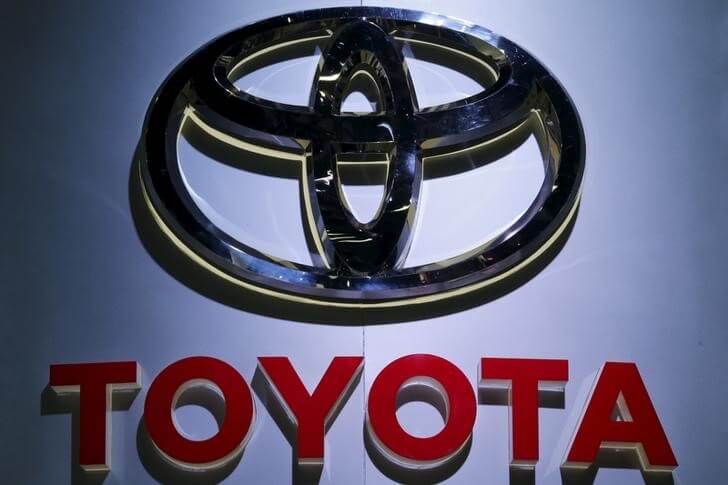By Naomi Tajitsu
TOKYO (Reuters) – Toyota Motor Corp <7203.T> flagged its smallest annual profit in four years for 2016/17 as the Japanese automaker braces for the impact from a strengthening yen amid slowing demand for some of its car models in the key North American market. The world’s biggest automaker by market value cut its full-year operating profit forecast on Thursday to 1.6 trillion yen ($15.78 billion), expecting it to fall 44 percent from a year ago to its lowest since 2013. Toyota trimmed its forecast from the 1.7 trillion yen given in May, as it revised its budgeted yen rate to 102 versus the U.S. dollar and 113 against the euro from previous forecasts of 105 yen and 120 yen, respectively. It promised steeper cuts to labor costs and tighter control over expenses to offset the worsening currency impact. A strong yen hurts Toyota and its smaller domestic rivals including Nissan Motor Co <7201.T> and Honda Motor Co <7267.T> as cars exported from Japan become more expensive, while it also decreases the value of earnings made overseas. A weak yen in the prior three years had led to a period of record annual profits at Toyota. The company expects currency moves to eat into this year’s operating profit by a whopping 1.12 trillion yen.
“The biggest change to our forecast is that we are now budgeting for the yen to trade around 100 to the U.S. dollar and the euro to trade around 110 from July,” managing officer Tetsuya Otake told a results briefing. Toyota produces roughly 40 percent of its vehicles in Japan, much more than its domestic competitors. It exported nearly half of its domestic production in the first six months of 2016, during which the U.S. dollar tumbled nearly 16 percent against the yen. Takaki Nakanishi, CEO at Nakanishi Research Institute, said that Toyota was taking a proactive approach to managing the currency impact and that other automakers may follow suit by revising their rates later in the year. EARTHQUAKE COST
For the April-June quarter, an appreciating yen pushed operating profit down 15 percent to 642 billion yen. That beat an average estimate of 493.5 billion yen from 11 analysts surveyed by Thomson Reuters I/B/E/S/. Toyota’s global vehicle sales rose during the first quarter on higher sales in Japan, Europe and Asia.
But sales fell in North America, where U.S. demand for the Prius has been sluggish since it went on sale there earlier this year, as low gasoline prices have stoked demand for gas-guzzling SUVs and pick-up trucks. Toyota said it planned to produce an additional 30,000 SUVs and larger vehicles, including its popular RAV4 crossover model, in the United States, in the fiscal year to take advantage of the shift in consumer preference that has hurt demand for models like the Prius and the Camry sedan. The automaker said a roughly two-week production halt at virtually all of its assembly plants following a strong earthquake in April had cost about 70 billion yen due to lost production of 60,000 vehicles. Toyota said it expected to make up for that lost production by the end of March. Toyota, which ceded ground to Volkswagen (Reporting by Naomi Tajitsu; Editing by Muralikumar Anantharaman)
Toyota braces for impact of stronger yen, cuts profit forecast

By Naomi Tajitsu


















